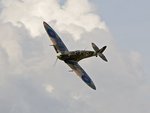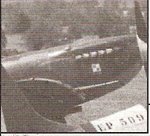thewritingwriter89
Airman 1st Class
Anyone who plays Il2 1946 knows there is a plethora of Spit variants. Last night, my dad and I fought each other (him in his Spit Vb, and myself in a 109F-4). It was a bit lopsided battle and the 109 had a slight upperhand. So, my dad, being the low-level dogfighter that he is, demanded a better low level Spit. I didn't think they even made one but sure enough, I came across the Spit LF series. So off we went (I switched to a 109G-2 for the sake of keeping the battle contemporary). I was really suprised. The 109 still held a speed advantage, but down low there is simply no way to turn with these "LF" models. Granted, I was in a G-2 and it is a little less manuverable than a F-4, but I could definently tell, I was dealing with a different opponent. Even for a Mk Vb, that thing is like a totaly different airplane.
After doing a little research, I found that the LF was fitted with a Merlin specifically tuned for performance at 2700 ft and that the wings were clipped. However, in Il2 there is a separate Spit for the clipped wings. My dad was just flying a Spit Vb (LF), not a Spit Vb (LF CW). Understandably, the Spit Vb (LF) had better performance at low altitude but is it really possible for the LF to be that much better? Tonight I'll try the 109F-4 against the LF and try to make use of some of that manuverability. What do you guys think?
After doing a little research, I found that the LF was fitted with a Merlin specifically tuned for performance at 2700 ft and that the wings were clipped. However, in Il2 there is a separate Spit for the clipped wings. My dad was just flying a Spit Vb (LF), not a Spit Vb (LF CW). Understandably, the Spit Vb (LF) had better performance at low altitude but is it really possible for the LF to be that much better? Tonight I'll try the 109F-4 against the LF and try to make use of some of that manuverability. What do you guys think?





